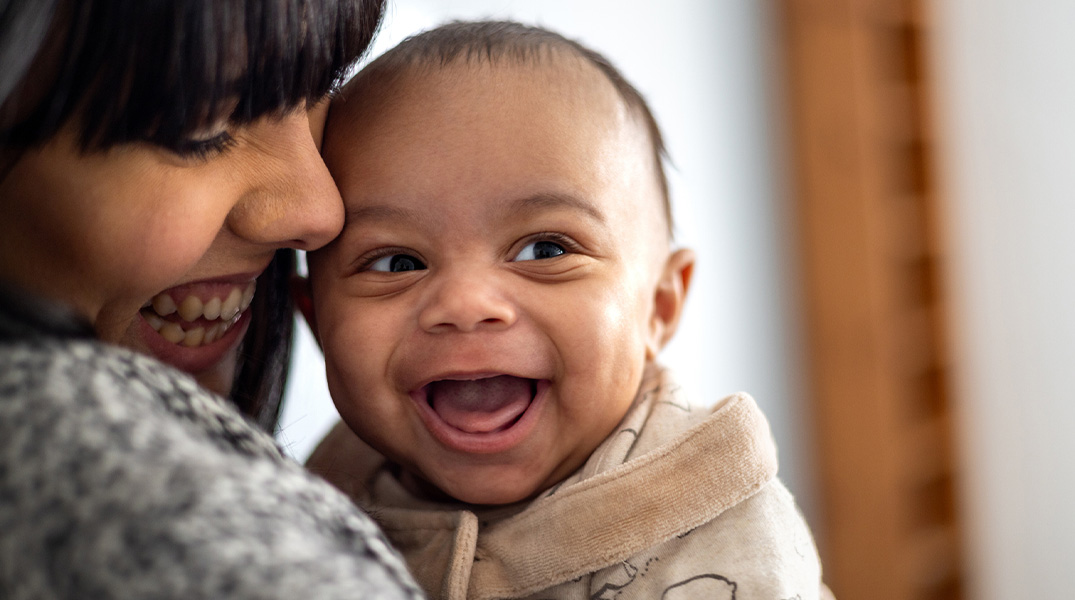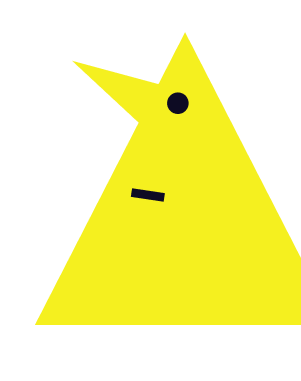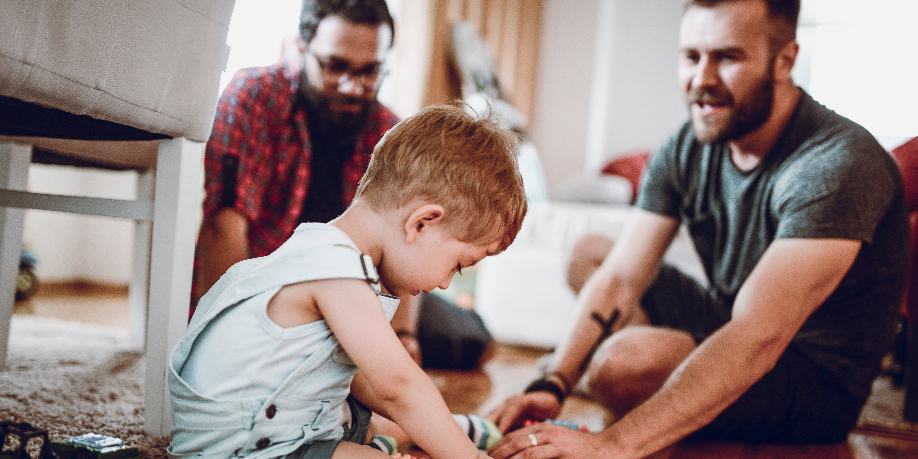0-6 months
This is a guide to how babies typically learn to communicate between 0-6 months.

Babies develop skills at different rates but by 6 months, most babies will:
- Turn towards a sound when they hear it, for example towards a favourite rattle.
- Be startled by loud noises, they make them jump.
- Watch your face and look into your eyes when you talk to them.
- Recognise some voices. For example, they get excited when a family member is walking towards their cot and talking to them.
- Smile and laugh when other people smile and laugh.
- Make sounds to themselves, like cooing, gurgling and babbling.
- Make noises, like coos or squeals, to get your attention.
- Have different cries for different needs. For example, one cry for hunger, another when they are tired.
- Make noises when you talk to them.
Support babies aged 0-6 months' communication development

Things to look out for
Some children struggle with learning to talk and understand words. Look out for:
- Babies who are not startled by loud noises.
- Babies who do not look at you when you talk to them.
- Babies who do not smile back at someone smiling at them.
- Babies who do not watch someone’s face with interest when they are talking.
If you notice any of these things, have a closer look at the baby’s speech, language and communication skills using one of our free tools:
Follow the process in your setting/workplace for raising concerns. This should include discussing your concerns with the baby’s family and your SENCo. Statutory guidance is outlined in the SEND Code of Practice (2015).
Further support
For tips on how you can support babies aged 0-6 months’ communication skills, have a look at some of our educator resources:

